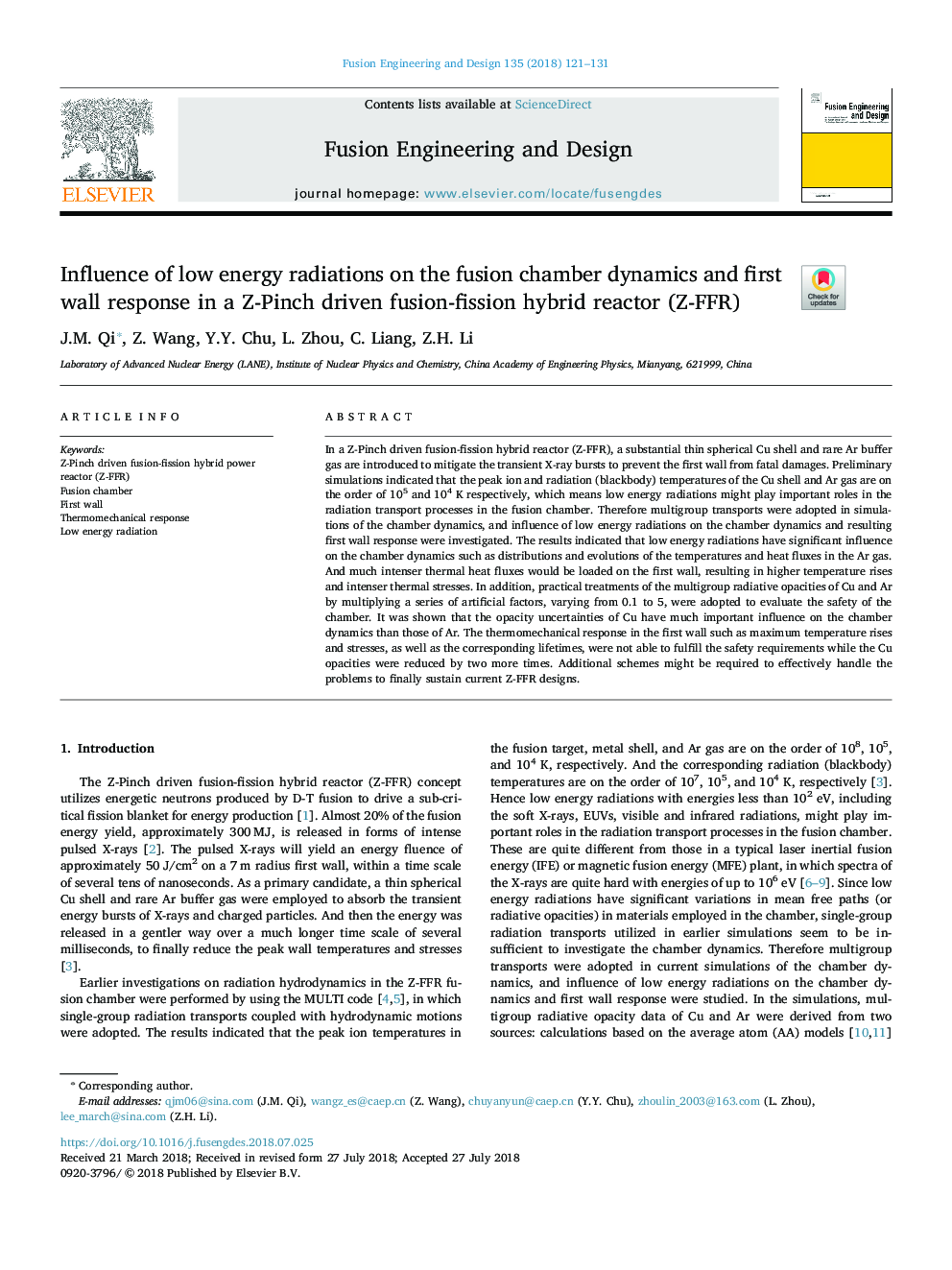| Article ID | Journal | Published Year | Pages | File Type |
|---|---|---|---|---|
| 6742754 | Fusion Engineering and Design | 2018 | 11 Pages |
Abstract
In a Z-Pinch driven fusion-fission hybrid reactor (Z-FFR), a substantial thin spherical Cu shell and rare Ar buffer gas are introduced to mitigate the transient X-ray bursts to prevent the first wall from fatal damages. Preliminary simulations indicated that the peak ion and radiation (blackbody) temperatures of the Cu shell and Ar gas are on the order of 105 and 104 K respectively, which means low energy radiations might play important roles in the radiation transport processes in the fusion chamber. Therefore multigroup transports were adopted in simulations of the chamber dynamics, and influence of low energy radiations on the chamber dynamics and resulting first wall response were investigated. The results indicated that low energy radiations have significant influence on the chamber dynamics such as distributions and evolutions of the temperatures and heat fluxes in the Ar gas. And much intenser thermal heat fluxes would be loaded on the first wall, resulting in higher temperature rises and intenser thermal stresses. In addition, practical treatments of the multigroup radiative opacities of Cu and Ar by multiplying a series of artificial factors, varying from 0.1 to 5, were adopted to evaluate the safety of the chamber. It was shown that the opacity uncertainties of Cu have much important influence on the chamber dynamics than those of Ar. The thermomechanical response in the first wall such as maximum temperature rises and stresses, as well as the corresponding lifetimes, were not able to fulfill the safety requirements while the Cu opacities were reduced by two more times. Additional schemes might be required to effectively handle the problems to finally sustain current Z-FFR designs.
Keywords
Related Topics
Physical Sciences and Engineering
Energy
Energy Engineering and Power Technology
Authors
J.M. Qi, Z. Wang, Y.Y. Chu, L. Zhou, C. Liang, Z.H. Li,
